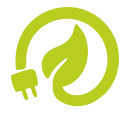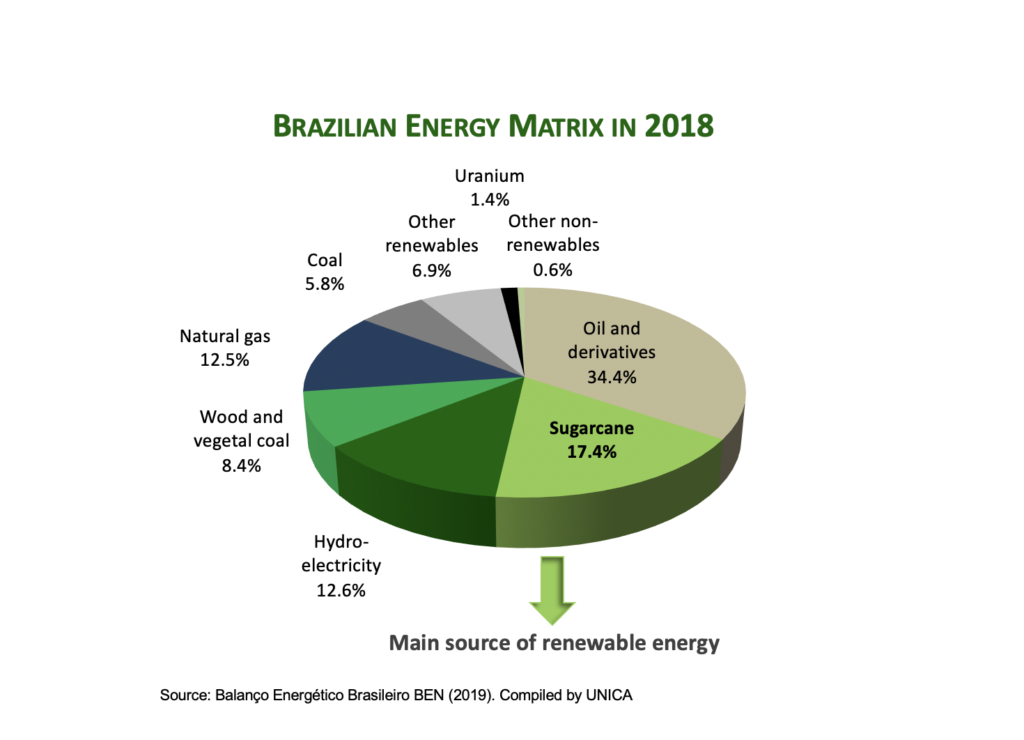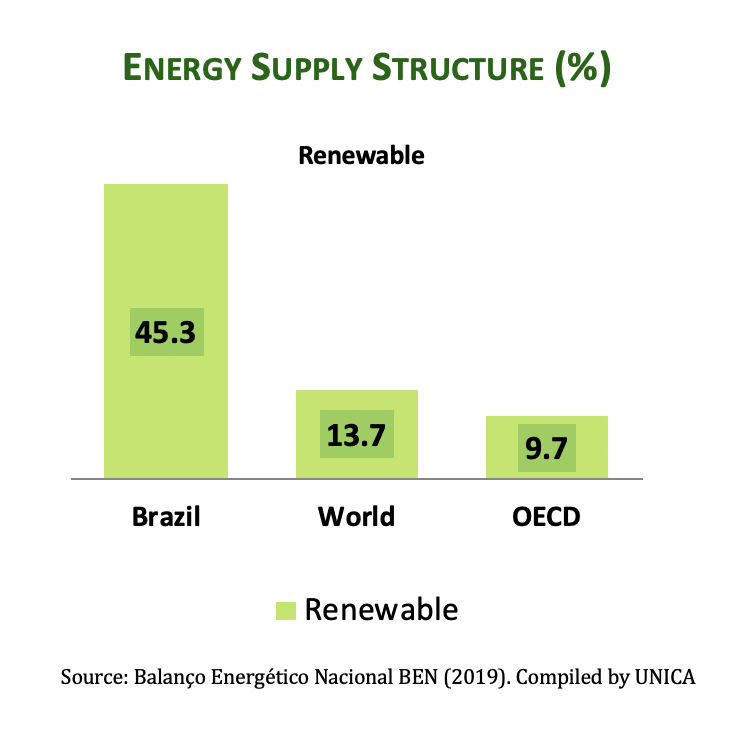Diverse Energy Matrix
 Brazil has successfully transitioned from importing almost 80 percent of its total oil consumption in the 1970s to becoming virtually energy independent and a leader in renewable energy. More than forty percent of Brazil’s energy comes from renewable sources compared to an average of less than 15 percent for the rest of the world.
Brazil has successfully transitioned from importing almost 80 percent of its total oil consumption in the 1970s to becoming virtually energy independent and a leader in renewable energy. More than forty percent of Brazil’s energy comes from renewable sources compared to an average of less than 15 percent for the rest of the world.
Sugarcane ethanol and bioelectricity produced from leftover fibers, stalks and leaves make sugarcane the largest source of renewable energy in Brazil. Sugarcane provides almost 17 percent of the country’s total energy needs, second only to oil and ahead of hydroelectricity. More than 40 percent of the country’s gasoline needs have been replaced by sugarcane ethanol – making gasoline the alternative fuel in Brazil.
LESSONS LEARNED
Brazil is fortunate to have a great variety of energy sources available for energy production. However, Brazilian energy has been relatively “cleaner” while being produced at internationally-competitive prices. This cautious energy planning pursued by the Brazilian government has ensured that the country:
- Supplies energy at relatively low costs
- Diversifies energy sources
- Diminishes the risk of energy shortages
- Reduces the market power of some large suppliers
- Controls environmental and social impacts, while maximizing positive effects
Brazil’s experience with sugarcane ethanol demonstrates to the world that sugarcane-derived energy can protect the environment, increase energy security and contribute to a thriving economy.
You May Also Be Interested In...
Reflections from the FFA: There is no protection in protectionism
WHAT'S NEW
Sugarcane harvest for South Central Brazil for the second half of November 2020 Read on
